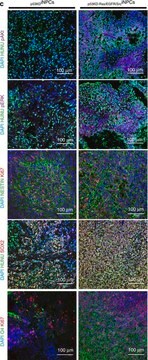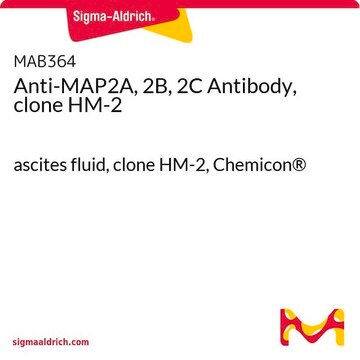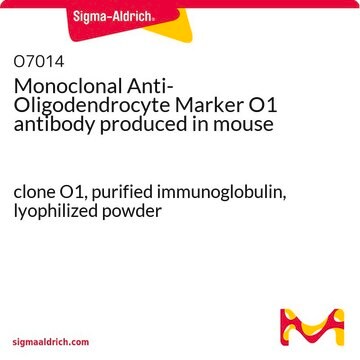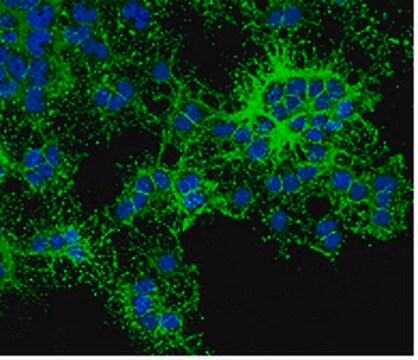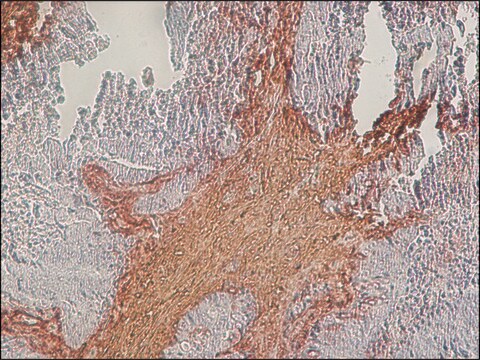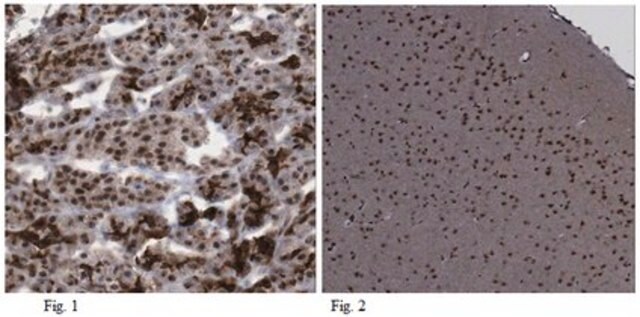MAB344
Anti-O1 Antibody, clone 59
clone 59, Chemicon®, from mouse
About This Item
Prodotti consigliati
Origine biologica
mouse
Livello qualitativo
Forma dell’anticorpo
saturated ammonium sulfate (SAS) precipitated
Clone
59, monoclonal
Reattività contro le specie
chicken, rat, mouse, human
Produttore/marchio commerciale
Chemicon®
tecniche
immunohistochemistry: suitable
Isotipo
IgM
Condizioni di spedizione
wet ice
modifica post-traduzionali bersaglio
unmodified
Specificità
Immunogeno
Applicazioni
Note: 01 is a lipid which is released from the membrane by alcohol.
Optimal working dilutions must be determined by the end user.
Neuroscience
Neuronal & Glial Markers
Stato fisico
Stoccaggio e stabilità
Risultati analitici
Oligodendrocyte culture, Brain
Altre note
Note legali
Esclusione di responsabilità
Codice della classe di stoccaggio
10 - Combustible liquids
Classe di pericolosità dell'acqua (WGK)
WGK 2
Punto d’infiammabilità (°F)
Not applicable
Punto d’infiammabilità (°C)
Not applicable
Certificati d'analisi (COA)
Cerca il Certificati d'analisi (COA) digitando il numero di lotto/batch corrispondente. I numeri di lotto o di batch sono stampati sull'etichetta dei prodotti dopo la parola ‘Lotto’ o ‘Batch’.
Possiedi già questo prodotto?
I documenti relativi ai prodotti acquistati recentemente sono disponibili nell’Archivio dei documenti.
Articoli
Human iPSC neural differentiation media and protocols used to generate neural stem cells, neurons and glial cell types.
Protocolli
Step-by-step culture protocols for neural stem cell culture including NSC isolation, expansion, differentiation and characterization.
Il team dei nostri ricercatori vanta grande esperienza in tutte le aree della ricerca quali Life Science, scienza dei materiali, sintesi chimica, cromatografia, discipline analitiche, ecc..
Contatta l'Assistenza Tecnica.